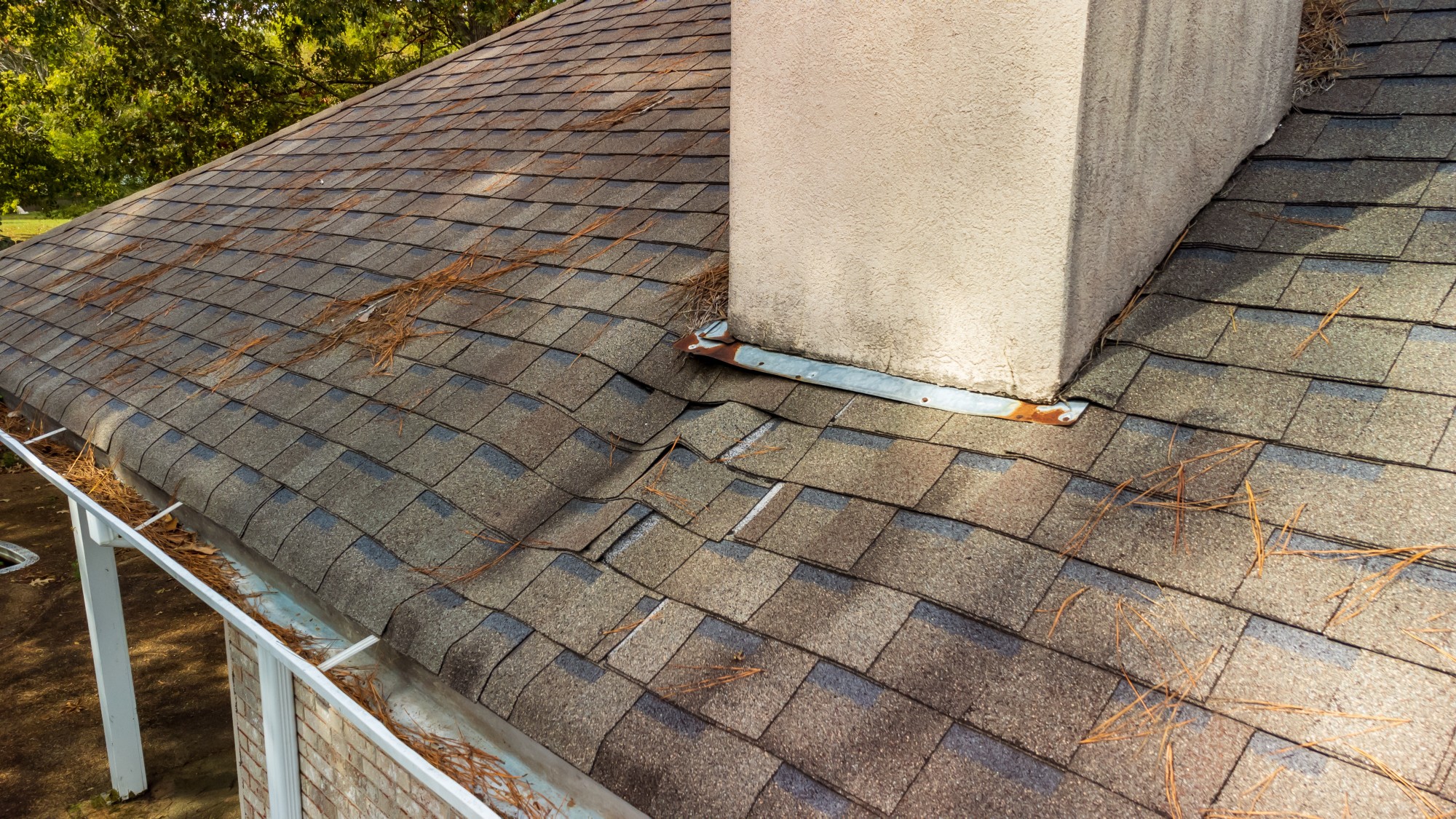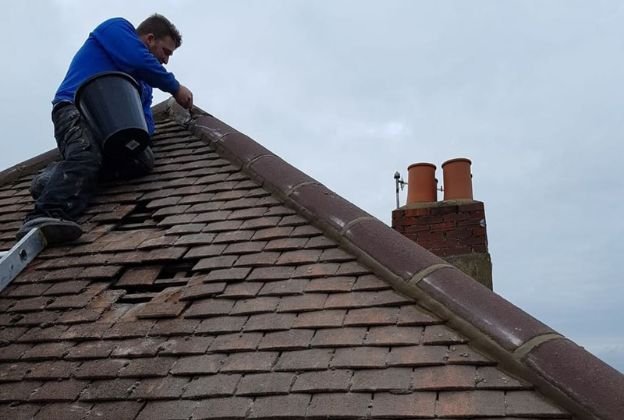Roofing Oahu: High Quality Services for Sturdy Roofs in Oahu
Wiki Article
Recognizing the Different Sorts Of Roof Coverings: A Comprehensive Guide for Homeowners
With an array of alternatives-- ranging from the typical gable to the contemporary level-- each type provides one-of-a-kind advantages and difficulties that ought to line up with the house owner's ecological considerations and details needs. As we check out the details of various roof kinds, it ends up being noticeable that one size does not fit all; the ideal option may surprise you.Gable Roofs
Saddleback roofs, defined by their triangular shape, are among one of the most prominent roofing designs because of their simpleness and effectiveness in losing water and snow. This style features two sloping sides that satisfy at a ridge, enabling for efficient water drainage and reducing the threat of water accumulation. The steep pitch frequently related to gable roofing systems improves their ability to deal with hefty precipitation, making them ideal for numerous climates.In addition to their functional advantages, saddleback roofs offer aesthetic flexibility. They can be adapted to different building styles, from standard to modern homes. The style can also fit extra functions such as dormer home windows, which improve all-natural light and ventilation in the attic room space.
In addition, gable roof coverings give enough room for insulation, adding to energy effectiveness. House owners can select from a variety of roofing products, including asphalt roof shingles, metal, and tiles, even more enhancing modification alternatives.
Regardless of their advantages, gable roof coverings might require added assistance in areas prone to high winds or heavy snowfall. Overall, the gable roof covering remains a preferred choice due to its mix of capability, longevity, and visual allure.
Flat Roofs
Flat roofing systems are often recognized for their minimal style and useful applications, specifically in commercial and commercial setups (oahu roofing). These roofings feature a straight or virtually horizontal surface, which permits easy building and functional space usage. While they might lack the aesthetic allure of angled roofs, flat roofing systems provide various benefits, particularly in metropolitan settings where optimizing room is importantOne of the primary advantages of level roofings is their ease of access. Home owners can utilize the roof covering space for numerous functions, such as rooftop gardens, balconies, or solar panel installations. In addition, level roof coverings are generally much more cost-effective to install and preserve compared to their sloped equivalents, as they require fewer materials and labor.
Common products used for flat roofings include built-up roof (BUR), customized bitumen, and single-ply membrane layers, each offering distinctive benefits. Overall, level roofings offer as a versatile and functional selection for numerous homeowners and businesses alike.
Hip Roofings
Hip roofing systems are defined by their sloped sides that assemble at the top, creating a ridge. This layout is distinctive from saddleback roofs, as all four sides of a hip roofing slope downwards towards the walls, offering a more secure framework. The angle of the inclines can differ, permitting versatility in building looks and capability.Among the main advantages of hip roof coverings is check it out their ability to hold up against hefty winds and damaging weather. The sloped surface areas allow far better water drainage, minimizing the threat of leaks and water damages. In addition, hip roofings provide boosted attic area, which can be made use of for storage or perhaps converted into comfortable areas.
However, creating a hip roof covering can be much more intricate and costly than simpler roof covering types, such as saddleback roofs. The added product and labor associated with producing the inclines and making certain appropriate structural honesty can cause higher expenses. Despite these downsides, numerous property owners prefer hip roof coverings for their longevity, visual charm, and capacity for power efficiency.
Mansard Roof Coverings
Mansard roofing systems, commonly acknowledged by their distinct four-sided design, attribute two slopes on each side, with the lower slope being steeper than the upper. This architectural design, originating from France in the 17th century, is not only visually attractive yet functional, as it makes the most of the functional area in the upper floors of a building. The high lower slope permits more clearance, making it a perfect choice for loft spaces or attic rooms, which can be exchanged living rooms.Mansard roof coverings are defined by their adaptability, accommodating various building styles, from conventional to contemporary. They can be created with various materials, including asphalt roof shingles, slate, or steel, supplying property owners with a variety of choices to fit their budgets and preferences. Furthermore, the design permits the combination of dormer windows, enhancing all-natural light and ventilation in the upper levels.
Nevertheless, it is essential to think about the possible downsides. Mansard roofing systems view website may need even more maintenance as a result of the complexity of their layout, and their high inclines can be testing for snow and rain overflow. On the whole, mansard roofs integrate elegance with usefulness, making them a prominent option amongst homeowners looking for unique architectural features.
Dropped Roof Coverings
As property owners significantly look for simplicity and functionality in their building styles, dropped roofing systems have actually arised as a prominent option. Defined by a single sloping plane, a shed roof presents a minimal aesthetic that matches various home designs, from modern to rustic.One of the primary advantages of a shed roofing system is its simple building, which usually translates to reduce labor and product costs. This design enables reliable water drainage, decreasing the risk of leakages and water damage. Additionally, the upright incline supplies adequate space for skylights, boosting natural light within the inside.
Lost roofs also use convenience in terms of usage. They can be efficiently integrated into enhancements, garages, or exterior structures like sheds and pavilions. Additionally, this roofing system style can fit different roofing materials, consisting of steel, asphalt roof shingles, or even green roofings, aligning with eco-friendly initiatives.
However, it is important to consider local environment conditions, as heavy snow lots might demand modifications to the roofing system's angle or framework. Generally, lost roofing systems offer Web Site a practical and cosmetically pleasing option for home owners aiming to maximize capability without jeopardizing design.
Conclusion


Gable roofs, identified by their triangular shape, are among the most popular roof covering designs due to their simplicity and performance in losing water and snow. oahu roofing. The high pitch commonly associated with gable roofings improves their capability to manage hefty rainfall, making them appropriate for numerous climates
While they may do not have the visual appeal of pitched roofings, flat roofings use various benefits, especially in metropolitan settings where making best use of space is vital.

Report this wiki page